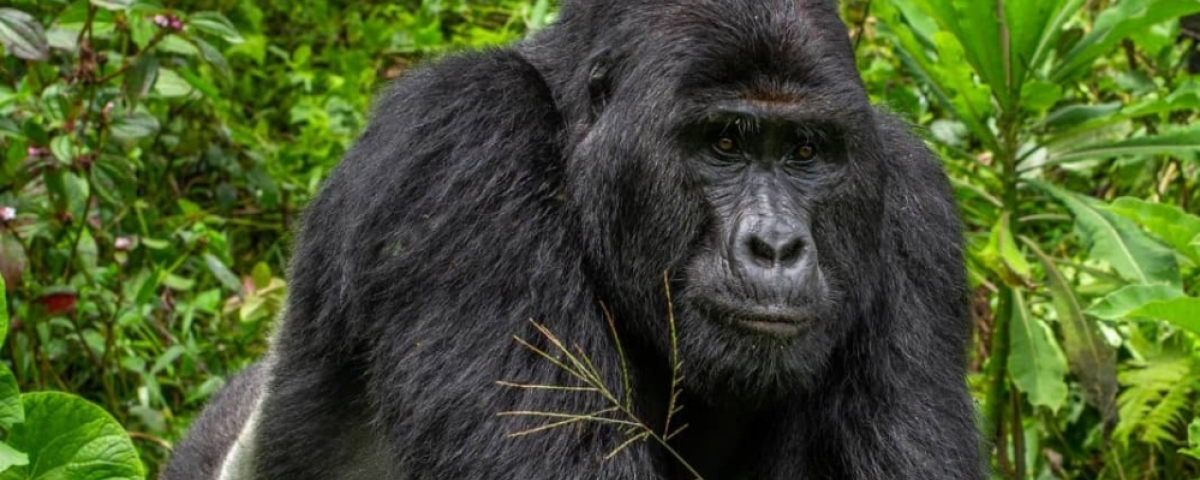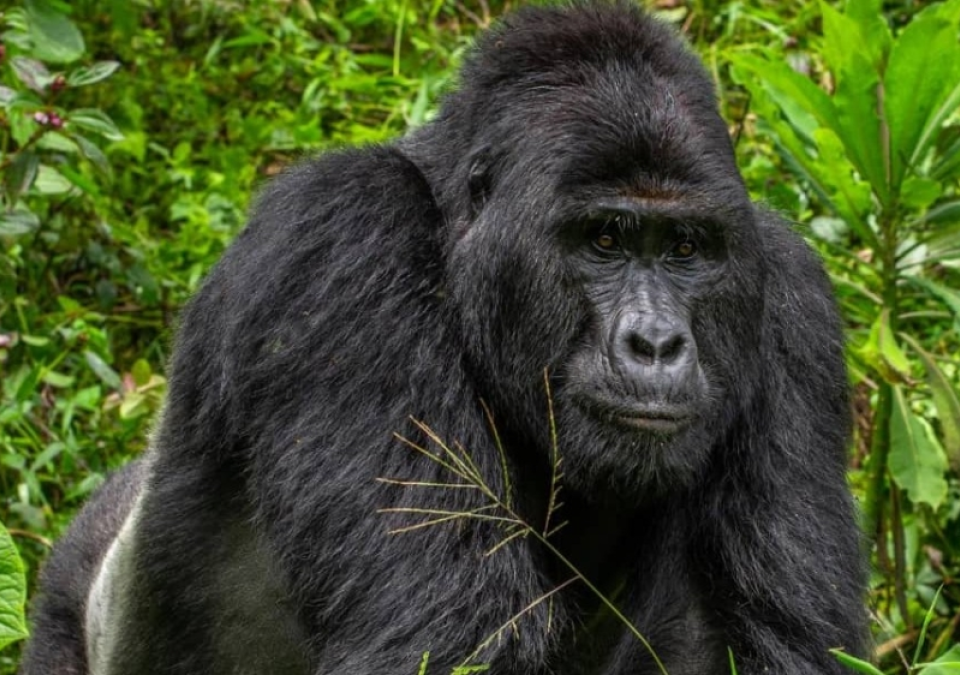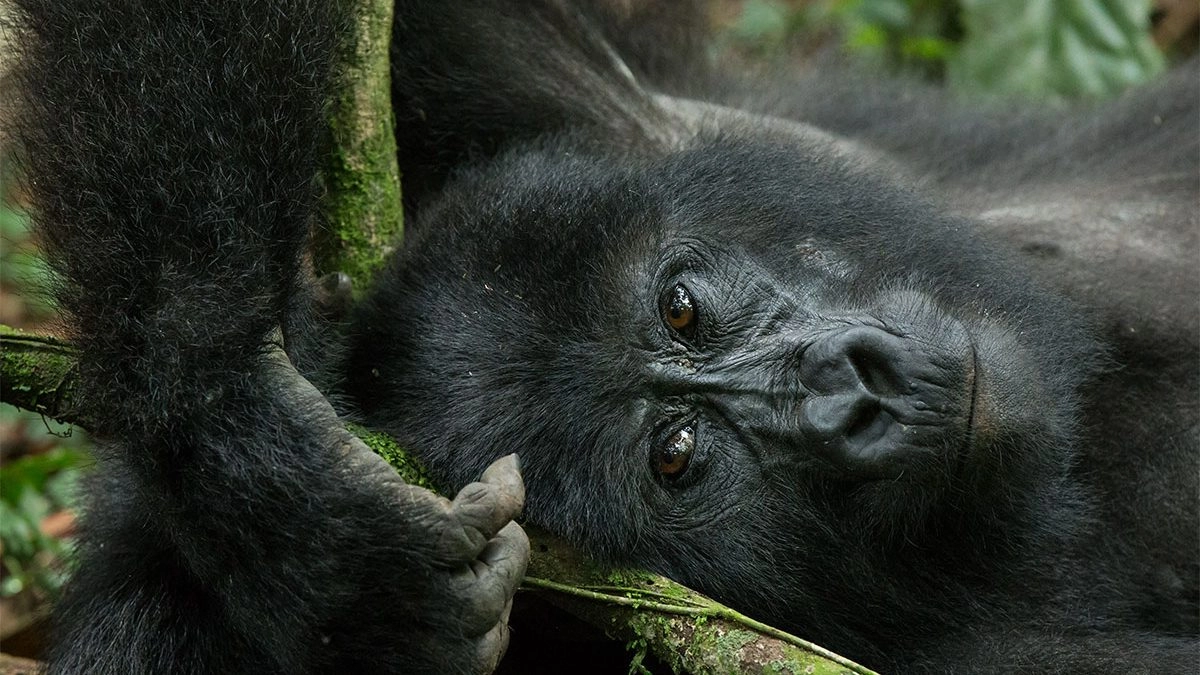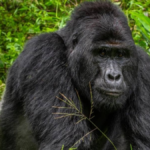
Mountain Gorilla Photography Tips
August 22, 2025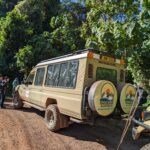
East Africa Wildlife Photography Holidays
August 22, 2025Mountain Gorilla Photography Tips for Beginners – Uganda Gorilla Photo Safari
Embarking on a Gorilla Trekking Photo Safari in Uganda represents one of the most thrilling wildlife photography experiences in the world. Mountain gorillas are among the most rare and emotionally expressive primates, offering photographers opportunities to capture intimate, meaningful moments in their natural rainforest habitats. Bwindi Impenetrable Forest, Mgahinga Gorilla National Park, and Volcanoes National Park in Rwanda host habituated gorilla families, allowing for ethical, safe encounters under the guidance of experienced rangers.
For beginners, photographing mountain gorillas requires more than just a camera. It involves understanding lighting, composition, behavior, and forest conditions while respecting wildlife and local cultural practices. Tours guided by Ovacado Adventures integrate professional photographic instruction with ethical wildlife viewing, ensuring participants can capture evocative images while minimizing disturbance to the gorillas. This guide presents foundational tips for beginners, covering camera techniques, composition strategies, environmental preparation, and cultural awareness, helping you achieve professional-quality images on your Uganda Gorilla Trekking Photo Safari.
Begin Your Africa Gorilla Photography Journey
Respect and Rules – Ethical Foundations for Gorilla Photography
Respecting wildlife and following established rules is fundamental to a successful Gorilla Photography Safari. Observing rangers’ instructions ensures safety for both photographers and gorillas. Rangers are intimately familiar with gorilla behavior and know how to navigate the forest without disrupting the animals. Maintaining a recommended distance, typically seven meters, reduces stress for gorillas while allowing sufficient opportunities for close-up photography.
Avoiding flash is equally critical. Sudden bursts of light can frighten gorillas and may even harm their sensitive eyes. Using natural light not only maintains safety but also enhances image quality, producing softer, more natural tones. When capturing images of gorillas, beginners should also respect the forest environment. Refrain from touching plants or disturbing terrain and ensure equipment does not interfere with wildlife. These practices establish ethical standards, enabling photographers to create professional images while fostering conservation awareness during Uganda Gorilla Photography Tours.
Camera Techniques – Mastering the Essentials
Understanding essential camera techniques empowers beginners to produce compelling Gorilla Photography Tours images. Focusing on the gorilla’s eyes is crucial for capturing emotion and creating portraits that resonate with viewers. The eyes communicate curiosity, intelligence, and mood, transforming a simple snapshot into a powerful image.
Using natural light enhances depth and character, particularly in the dense forest where sunlight filters through the canopy. Photographers should seek soft, diffused light that illuminates faces without harsh shadows. Employing a wide aperture, such as f/2.8, allows the background to blur, isolating the gorilla as the focal point. This technique emphasizes subject prominence while maintaining the forest’s aesthetic.
Varying lenses increases creative flexibility. Telephoto lenses are ideal for capturing distant portraits without disturbing gorillas, while wide-angle lenses incorporate environmental context, revealing the interplay between gorillas and their habitat. Shooting at eye level, or slightly lower, ensures natural perspective, making images more engaging and lifelike. Beginners can use these foundational techniques to achieve professional-quality results on their Uganda Gorilla Trekking Photo Safari.
Composition and Storytelling – Crafting Meaningful Images
Photography is not merely technical; it is storytelling. Capturing gorillas’ social interactions—grooming, play, or group behaviors—creates narratives that convey personality and hierarchy. Observation is key: patiently watching how individuals interact allows photographers to anticipate moments of connection, laughter, or curiosity.
Natural framing adds depth to compositions. Branches, vines, or leaves can frame the subject, providing visual context while enhancing artistic impact. Including the environment in images is equally important. Showing misty valleys, dense forests, or forest clearings communicates the gorillas’ habitat, enriching each image with ecological significance. By combining behavior, environment, and creative framing, beginners can produce images that illustrate conservation, forest life, and the emotional depth of mountain gorillas.
Integrating storytelling transforms photographs from simple records into compelling visual narratives. Participants in Gorilla Photographic Tours often find that images capturing interactions, expressions, and habitats tell a more complete story than solo portraits, offering viewers insight into both wildlife and ecosystem dynamics.
Environmental Preparation – Thrive in the Forest Conditions
Photographing mountain gorillas requires preparation for challenging rainforest conditions. Dense foliage, humidity, mud, and steep trails can make photography physically demanding. Wearing neutral-colored clothing helps photographers blend into the environment, reducing distractions for wildlife and enabling candid captures.
Protecting camera equipment is essential. Rain covers, lens hoods, and microfiber cloths help safeguard gear from mist and moisture. Lightweight monopods provide stability in uneven terrain, as tripods are often impractical. Patience is a critical skill: waiting for the right moment ensures that behavioral expressions, grooming sessions, or playful interactions are captured authentically.
Understanding seasonal variations improves preparation. During wet months, vibrant vegetation offers lush backdrops but requires extra care to protect equipment. Dry seasons provide easier hiking conditions and more stable lighting, which may simplify camera settings. By preparing for environmental challenges, photographers maximize their creative potential during a Gorilla Trekking Photo Safari while maintaining safety and respect for gorillas.
Lens Selection – The Key to Versatility
For beginners, selecting versatile lenses is essential to cover a wide range of photographic scenarios. Telephoto lenses, such as 70–200mm or 100–400mm, allow close-up portraits without disturbing gorillas. Wide-angle lenses enable photographers to capture gorillas within their forest environment, combining animal, landscape, and ecological context in a single frame.
Using a wide aperture enhances subject isolation, while telephoto zooms maintain flexibility across varying distances. A combination of lenses allows beginners to adapt to changing light, terrain, and gorilla behavior. This flexibility is crucial on Uganda Gorilla Photography Safaris, where encounters may vary from intimate close-ups to wide environmental compositions. Investing time in lens selection and understanding focal ranges ensures beginners can capture dynamic, compelling images throughout the trek.
Lighting Strategies – Natural Illumination for Optimal Results
Mountain gorilla forests are challenging due to variable lighting conditions. Dappled sunlight filtering through the canopy creates uneven highlights and shadows. Beginners should seek consistent, soft light, often found in shaded areas or during early morning and late afternoon.
Avoiding direct sunlight prevents harsh reflections on glossy gorilla coats and minimizes contrast that can obscure facial details. Embracing natural, diffused light enhances texture, depth, and realism, ensuring images convey the gorillas’ physical and emotional presence. Learning to adjust ISO, aperture, and shutter speed in response to dynamic forest lighting is critical. Skillful use of natural illumination enhances the success of any Uganda Gorilla Trekking Photo Safari, producing images that appear professional, vivid, and emotively powerful.
Patience and Observation – Capturing the Unseen Moments
Successful gorilla photography demands patience. Mountain gorillas move deliberately, and intimate, expressive moments may unfold slowly. Observing behaviors, anticipating actions, and waiting for interactions such as play, grooming, or vocalizations allows photographers to capture decisive moments.
Patience also extends to composition. Forest elements like hanging vines, moss-covered trees, and dappled sunlight offer opportunities for framing and context. Beginners learn to combine patience with observation, producing images that reveal the gorillas’ personalities and social dynamics. On Gorilla Photography Tours, patience transforms routine encounters into storytelling opportunities, capturing the authenticity of behavior and the richness of the rainforest environment.
Cultural Experiences Around Gorilla Lodges
Gorilla lodges, such as those guided by Ovacado Adventures, are often located near indigenous communities, providing additional cultural photography opportunities. Interacting respectfully with Batwa or other local groups allows photographers to document music, dance, and craft-making. Always request permission and follow guides’ advice to ensure ethical engagement.
Cultural experiences complement wildlife photography, adding depth and diversity to safari portfolios. Images that combine gorillas, habitat, and human cultural elements present a holistic narrative of Uganda’s biodiversity and traditions. These experiences enrich any Uganda Gorilla Photo Safari, providing both visual variety and educational value, while fostering meaningful engagement with local communities.
Gear and Accessories – Ensuring Readiness for Field Conditions
Proper gear ensures successful Gorilla Photography Safaris. Essential items include extra batteries, memory cards, rain covers, lens cleaning tools, and lightweight monopods. Clothing in neutral tones blends with the environment, minimizing distractions for gorillas and allowing authentic captures.
Organizing gear for quick access facilitates fast reactions to unexpected behavior or lighting changes. Preparing for the challenging terrain and humid conditions ensures photographers can focus on composition and storytelling rather than equipment logistics. Well-prepared photographers enjoy smoother experiences and produce higher-quality images on Gorilla Trekking Photo Safaris, building confidence for both beginners and advanced enthusiasts.
Begin Your Journey to Africa Gorilla Photography Mastery
For beginners, photographing mountain gorillas combines technical skill, ethical awareness, patience, and creative vision. By following rangers’ instructions, maintaining respectful distance, using natural light, focusing on eyes, and employing versatile lenses, photographers capture powerful, authentic images.
A Uganda Gorilla Trekking Photo Safari with Ovacado Adventures integrates guidance, ethical practices, cultural exposure, and forest expertise, enabling beginners to produce professional-quality images. These safaris cultivate observation, patience, and storytelling, transforming wildlife encounters into compelling visual narratives. From intimate gorilla portraits to wide environmental compositions and cultural integration, beginners emerge with a comprehensive portfolio that reflects skill, respect, and artistry in African wildlife photography.
By embracing these mountain gorilla photography tips, novices can confidently explore the forest, capture unforgettable moments, and contribute meaningfully to conservation awareness, elevating their Africa Gorilla Photography Tour to both a professional and life-changing experience.


